“It can take many visits with a whisky before knowing if it’s awesome or a mess. Other times, you know instantly.”
Those are the no-nonsense words of Jared Himstedt, a no-nonsense sorta dude. Himstedt is the co-founder and head distiller of Texas’ Balcones Distillery, in Waco. He spends his days distilling and tasting some of the most unique expressions of American single malt, bourbon, rye, and specialty whiskeys in America. Yes, he knows exactly how enviable that gig sounds.
When I met Himstedt for the first time, he was perched on a high stool in a tasting room, surrounded by thousands of tasters of his own whisky, drawn from every single barrel in the Balcones warehouse. His scraggly beard, long black hair, black jeans and t-shirt combo, and the knife on his belt spoke to something both punk and Texas. His nose was deep in a glass. Lines furrowed in his forehead as he contemplated the brown elixir before him.
“For me, I know when I’ve found a truly spectacular whisky when my mind doesn’t immediately go into dissecting it,” he said during that first meeting. “When my first thought is that it’s badass, rather than picking it apart into its notes and narrative, then I know this dram is onto something.”
After befriending and learning from Himstedt, plus years bartending at Berlin’s world-famous Victoria Bar, and a dozen distillery visits from Scotland to Kentucky, I’ve realized that recognizing good whiskey is a skill just like carpentry or writing — one you can develop and build upon with experience. It’s also, above all things, fun. Because even if your palate is as nuanced as Himstedt’s, it’s wasted if you’re not enjoying yourself.
Let’s dive into how to taste whiskey like a pro.
https://www.instagram.com/p/Bto2p5GgJkB/
THE GLASS
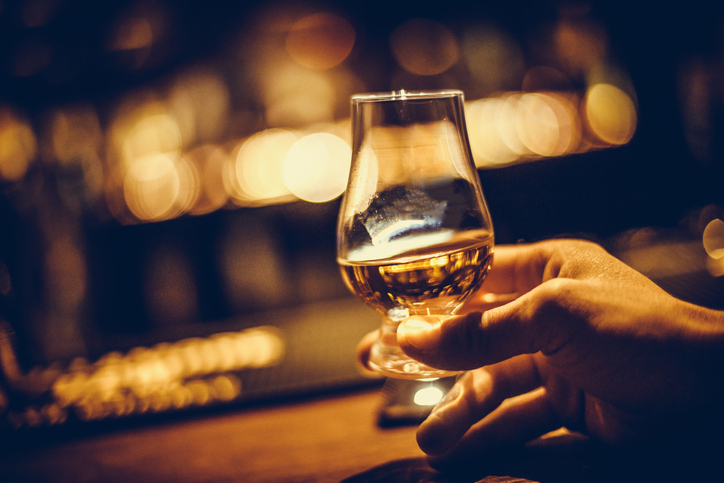
Yes, the glass is important when tasting any booze. A whiskey tasting glass (the Glencairn whisky glass) should be bulbous at the bottom that then tapers towards the top. One ounce of liquid should fill the glass about half-way up the bulbous part.
The narrowing of the glass is crucial to the whole experience of tasting. It allows air to get trapped in the vessel which helps release the aromas and lets them rise and sit at the top of the glass. This means you get a better chance of taking in the nose in all its glory before you sip.
THE POUR
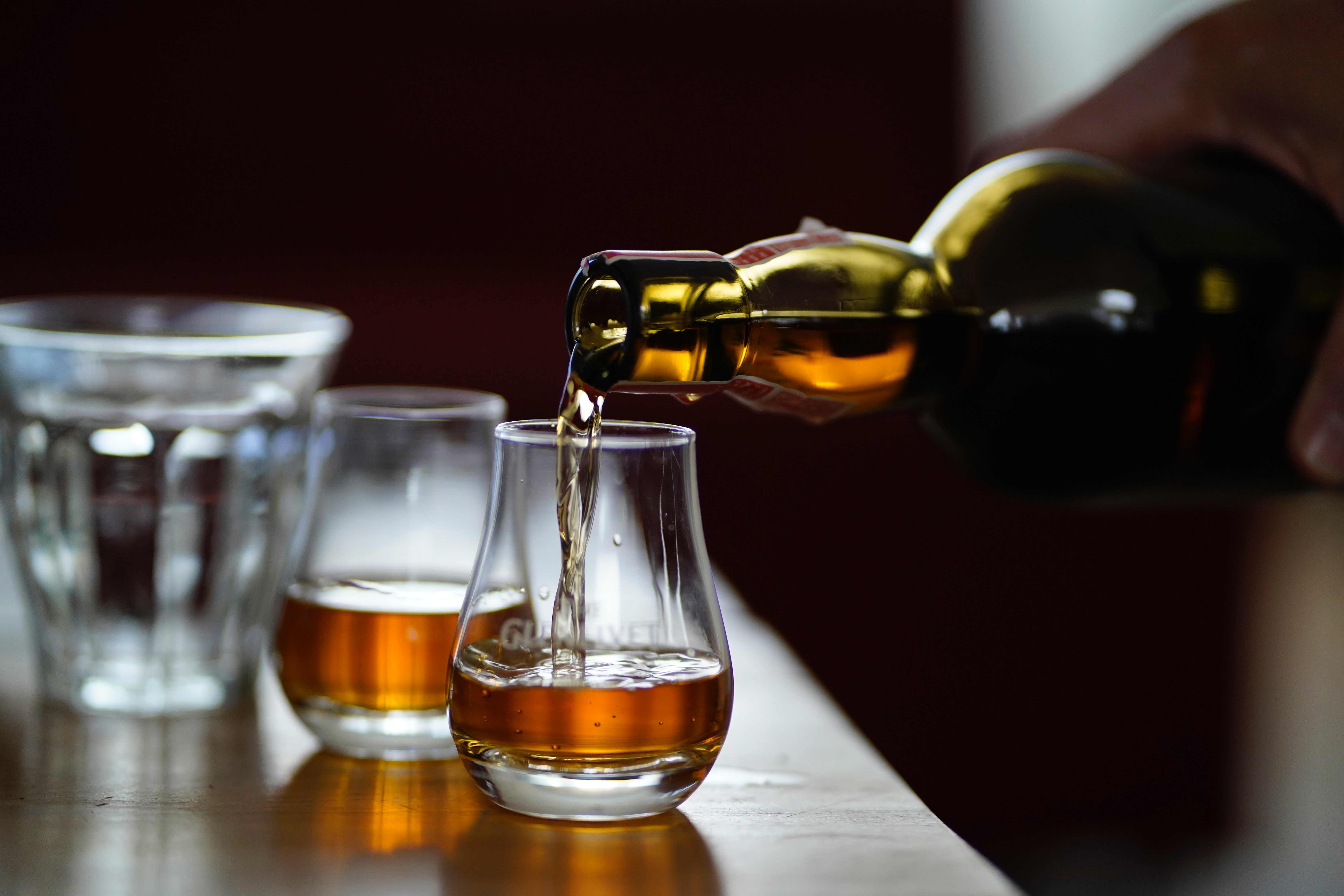
Generally, when tasting whiskey, you don’t want to overdo it. This is even truer if you’re tasting a flight of expressions. One ounce pours are pretty big to begin with (a cocktail operates on 1.5 ounce pours generally). So go easy when pouring your whiskey into your glass.
We would suggest using a measuring vessel so that you know you’re dialed in. If you’re free-handing it, do a one-two count pour. That is, the one-count is when you tip the bottle over the glass, and the two-count is when you tip the bottle back up.
THE LOOK
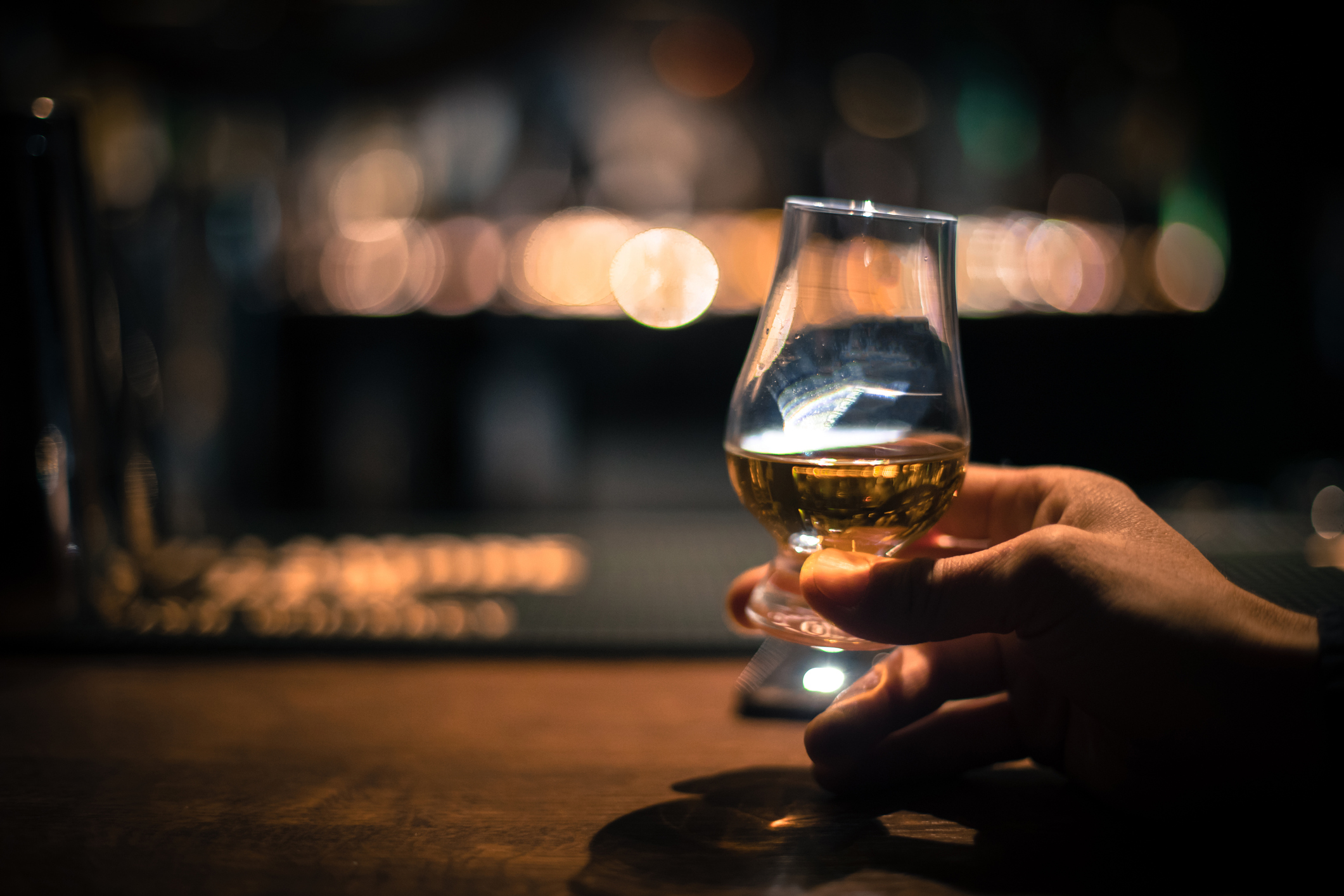
“I’m looking for some sense of cohesiveness,” Himstedt says, “like the whisky knows what it is.”
Take your time looking at the whiskey. Hold it up to the light and let it shine through. There are generally three things to look for when looking at your whiskey: Color, clarity, and viscosity.
Color can be tricky. When tasting whiskey with Himstedt directly from the barrel, I know there’s no adulteration at play. That’s not true of bottles on the market which can utilize coloring agents to tamper with their hue. E150 or caramel coloring is often added to everything from bourbons to single malts. And brands make it none too easy to figure this out. Research your whiskey to find out what’s in there. Beyond that, color is highly dependent on the length of time in the barrel, how that barrel was treated (toasted or charred), and what the final whiskey may have been blended with. Tasting notes from distillers will invariably include the color and how the whiskey should look in those notes.
Clarity has to do with fatty acids and proteins remaining in the spirit, or if chill-filtration was used to remove them. When you add water to a whiskey that has not been chill-filtered, it’ll cloud ever so slightly. That’s those fatty acids and proteins reacting with the H20. Very broadly speaking, that cloudiness isn’t present in chill-filtered whiskeys.
Viscosity is the look of the booze in the glass. Give it a twirl and watch as the alcohol tears or “legs” down the inside of the glass. Are the legs thick or thin? Are they falling slowly are rapidly? Are the legs compact or spaced out? Technically speaking, this is all about the Marangoni effect — which is the surface tension created by the balance of alcohol and water in the dram. The higher the alcohol means more legs that’ll fall slowly. More fatty acids mean thicker legs. Finally, the older the whiskey (or the longer it’s spent barreled), the more the legs will spread out on the glass’s surface.
THE NOSE
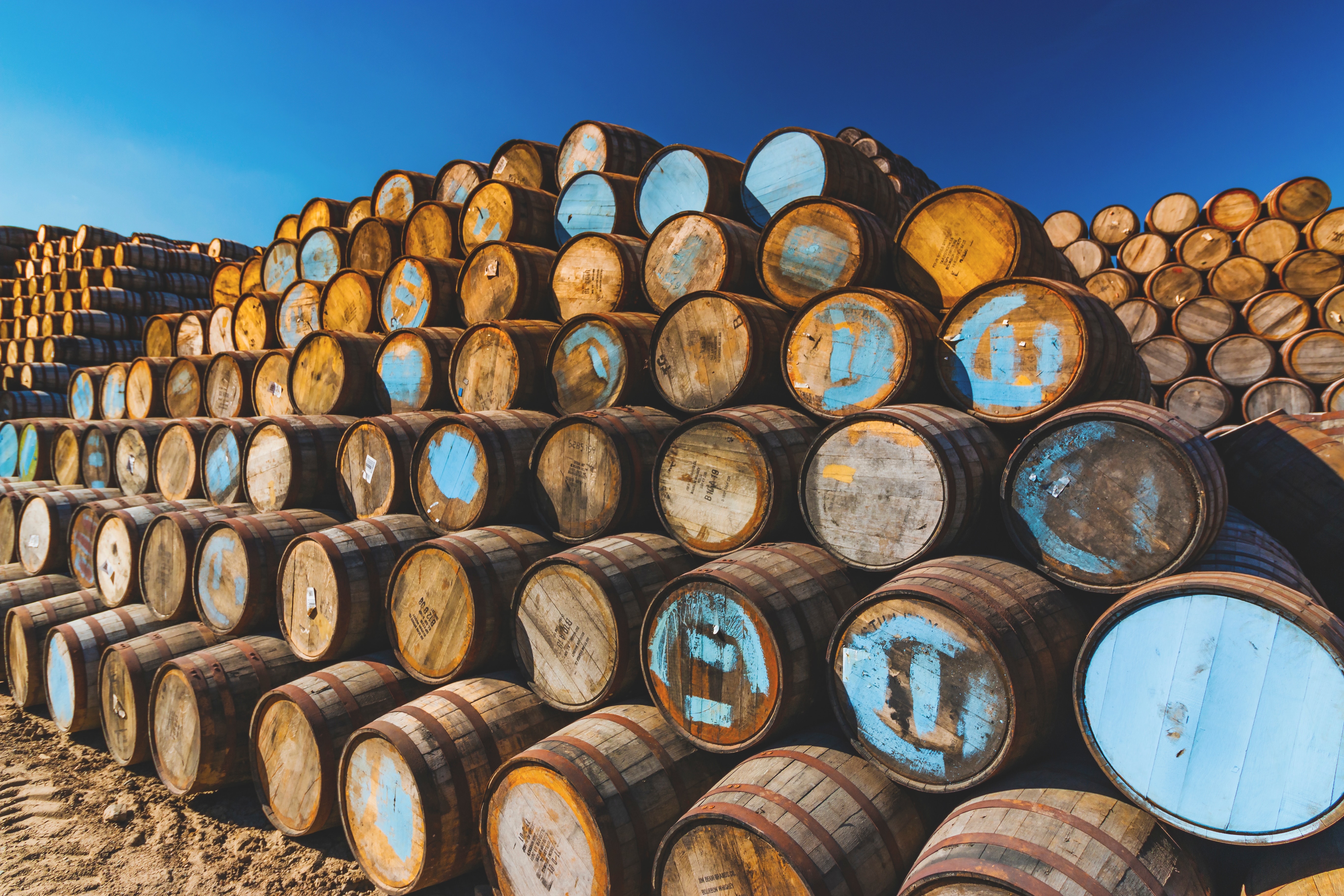
“One mistake people make is not spending enough time nosing.” Himstedt says, “you’re doing yourself a huge disservice by not spending some time smelling your pour and getting to know it before throwing it back.”
What you’ll be looking for in your pour’s nose is highly dependent on what you’re tasting. Slightly open your mouth and then smell … then talk. Opening your mouth when you smell helps open up your olfactories, heightening the intake. When you put our nose in that glass, you’re picking up chemical compounds that the brain translates into notes you have filed away in your brain. Talking through what you’re experiencing helps activate those points in your brain.
If you’re sipping bourbon, are there notes of vanilla present? Was the barrel toasted? How much char are you getting? Is the sweetness more butterscotch or toffee? Is there a grassy note? A dank one? Leather? Tobacco? Oranges? You grandmother’s Christmas pudding?
Turn the glass on its side so that it’s perfectly horizontal — the drink should rest in the bulb and not spill. This moves air around inside the glass and helps release the full spectrum of nuances. Bright floral and fruity notes will rise to the top. Vinous, malty, and spicy notes will sit around the middle. Woody, earthy, and smoky notes will lurk at the bottom.
Smell and talk it through again. Add some air with a twirl. Smell again with each nostril separately. Talk some more. Remember this: Whiskey tasting is a team effort. As Himstedt says, take your time and get to know that dram.
THE SIP
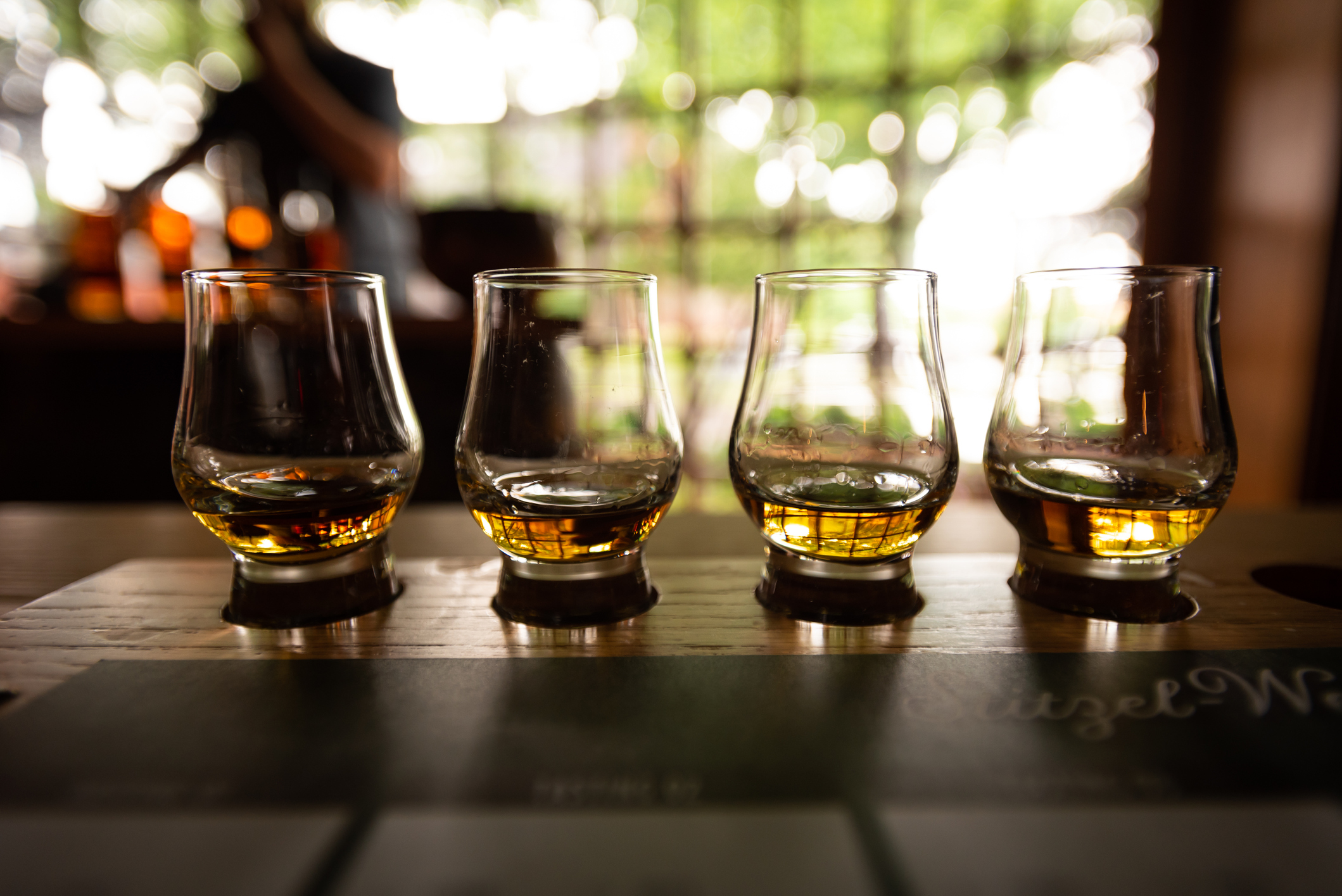
Now, the time has come to actually drink some whiskey!
“Another mistake people make when drinking whisky is swallowing too quickly,” Himstedt notes. “Letting the whisky hang out in your closed mouth for a while can really affect your perception of the body, sweetness, and overall flavor complexity and layering.”
What Himstedt is getting at is that this is not a shot you take at 1 am to beat last call before the lights go up. You need to get to know the whiskey and the sip is when mind and body come together.
Take a small sip. Roll it in your mouth — or chew it if you will. This allows the whiskey to open up your taste buds, maximizing absorption of the compounds present in the sip. Let the whiskey roll from the front of your mouth, over the tongue, and rest at the back of your mouth for a moment before you swallow.
Take it down, let flow and settle, then, again, talk it out. Was it spicy? Smoky? Leathery? Velvety? How’d it coat your tongue? Was the burn an alcohol burn or a spice burn? Trying comparing it to things you know.
Was the sweetness more molasses or honey? What did you taste? Did you like it?
Importantly, let the sip sit with you for a long moment. What do you feel a minute after the whiskey has gone down? Is there a numbness? A spark? Warmth? Do you want more?
Remember, it’s okay to just say “I really like it” or “this one’s not for me” and let it be at that.
ADD WATER — REPEAT
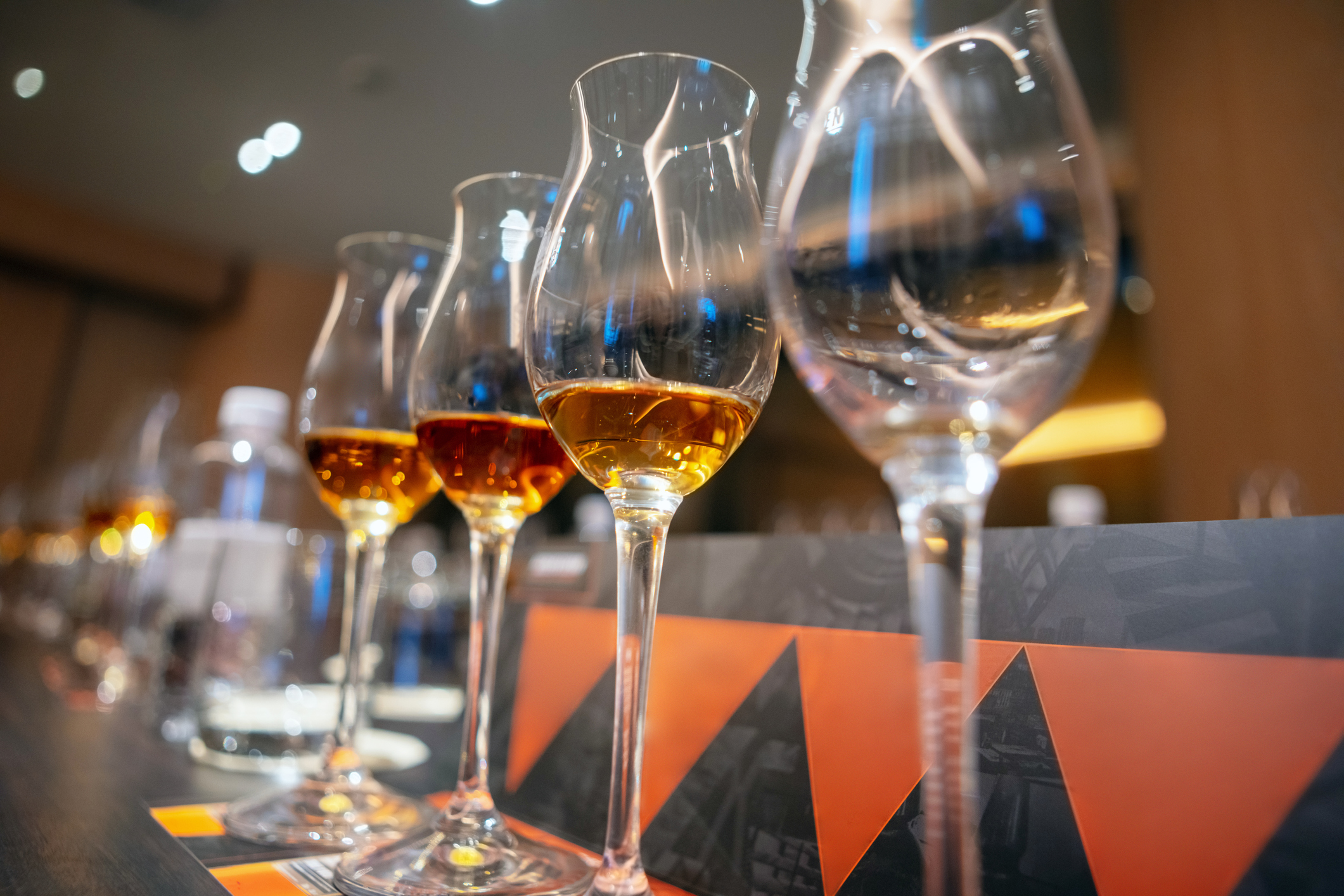
After your first taste, there’s still going to be whiskey in your tasting glass. At this point, it’s a good idea to add a drop or two of water — often called a pipette. This addition of H2O works with the fatty acids and proteins in the whiskey to open up more aromas and tastes, adding depth. In a good, unadulterated whiskey, you’ll see tiny protein and fat strands in the brown elixir start to bind with the water. It’s science that feels like magic.
Taste the whiskey again. Talk it through. Smell some more. Sip some more. Talk some more. We can go on about tastes and the feel, but, really, it comes down to this: Did you dig it?
Finally, taste that whiskey again in another setting. Why should we taste any whiskey again? Himstedt breaks it down: “Our palates are so affected by weather, what we have eaten, time of day, how our day went, etc., we should give a whisky multiple tastes before making our judgment about it.”
Our palates are constantly evolving. Tasting whiskey or rum or cheese or, hell, even lettuce is something we do over and over again which then informs our palate and likes or dislikes. Given the effort it takes to grow and harvest crops, malt the grains and cereals, mill, ferment, distill, barrel, perhaps blend, bottle, and transport every bottle of whiskey, it certainly deserves a few chances before any judgment is passed.
The best part? You get to drink a lot of whiskeys figuring out which ones you love.







